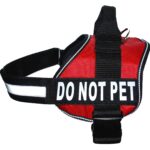Can My Dog Eat Pizza Crust
Can My Dog Eat Pizza Crust? Exploring the Risks and Benefits of Sharing Your Slice with Fido
If you’re a pizza lover, it’s hard to resist the crust. That crispy, chewy, slightly salty dough that frames the cheesy, saucy goodness can be as satisfying as the toppings themselves. But what about your dog? Should you give him or her a piece of pizza crust as a treat or snack? Is it safe or healthy for dogs to eat pizza crust? In this article, we’ll answer these questions and more, based on scientific evidence and expert opinions.
First of all, let’s define what pizza crust is. Pizza crust is usually made of flour, water, yeast or baking powder, salt, and sometimes oil or sugar. Depending on the recipe and style, pizza dough can vary in texture and flavor, but generally it contains gluten and carbohydrates. When baked at high temperatures (usually between 450-500 degrees Fahrenheit), pizza dough undergoes chemical reactions that transform its structure and taste. The outer layer becomes crispier due to dehydration and Maillard reaction, while the inner part remains soft due to steam and yeast fermentation. The result is a deliciously aromatic bread that complements the toppings of pizza.
However, dogs have different digestive systems than humans. Dogs are carnivores by nature, meaning they evolved to eat meat as their primary source of nutrients. While modern domestic dogs can digest some plant-based foods like grains and vegetables, they still have shorter intestines and less efficient enzymes for breaking down complex carbohydrates than humans do. Therefore, feeding dogs too much bread or other processed grains can lead to various health problems such as obesity, diabetes, allergies, and digestive upset.
Moreover, certain ingredients commonly found in pizza crust can be toxic or harmful to dogs. For example:
– Garlic: many types of pizza crust contain garlic powder or minced garlic as a flavor enhancer. However, garlic contains compounds called thiosulphates that can damage dogs’ red blood cells and cause anemia if ingested in large amounts. Even small amounts of garlic can irritate dogs’ digestive tract and cause vomiting, diarrhea, and abdominal pain.
– Onion: similar to garlic, onion contains thiosulphates that can poison dogs’ blood cells and lead to anemia. Onion powder or diced onion is often added to pizza crust or toppings, so beware of any traces that your dog might lick off the plate or floor.
– Cheese: while cheese itself is not toxic to dogs, it can be high in fat, calories, and lactose. Some dogs may be lactose intolerant or allergic to certain types of cheese (e.g., blue cheese, feta) that contain mold or bacteria. Too much cheese can also cause obesity, pancreatitis, or diarrhea in dogs.
– Salt: pizza crust usually contains salt as a flavoring agent and preservative. However, excessive salt intake can lead to dehydration, electrolyte imbalance, high blood pressure, and kidney damage in dogs. Dogs should not consume more than 1 teaspoon of salt per day for every 20 pounds of body weight.
Given these potential risks associated with pizza crust for dogs, it’s better to err on the side of caution and avoid feeding them this food item altogether. However, if you still want to share a slice with your dog occasionally, here are some tips to minimize the harm:
– Choose whole-grain crust: whole grains contain more fiber and nutrients than refined grains like white flour. Look for pizza places that offer whole-wheat or whole-grain options for their crusts.
– Skip the toppings: most pizza toppings are not suitable for dogs either due to their high fat content (e.g., pepperoni, sausage) or their potential toxicity (e.g., mushrooms, onions). Stick to plain cheese or veggie pizza without garlic or onion.
– Cut the crust into small pieces: to avoid overfeeding your dog with too many calories or carbs, cut the crust into bite-sized chunks and limit the amount to one or two pieces per serving.
– Monitor your dog’s reaction: after giving your dog a piece of pizza crust, observe how he or she behaves and feels. If your dog shows any signs of discomfort, such as vomiting, diarrhea, lethargy, or itching, stop giving him or her pizza crust immediately and contact your vet if necessary.
In conclusion, while pizza crust may seem like a harmless snack for dogs, it can pose several health risks due to its ingredients and nutritional profile. Dogs have different dietary needs than humans and should not consume too much processed grains, salt, fat, or toxic substances. Although occasional sharing of plain whole-grain pizza crust in small amounts may not harm most dogs, it’s better to stick to their regular diet and offer them safer treats such as lean meat, fruits, vegetables, or commercial dog treats that are specifically formulated for their health needs. Remember that your dog relies on you to provide him or her with the best possible nutrition and care.



